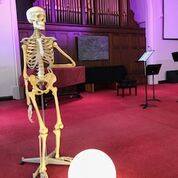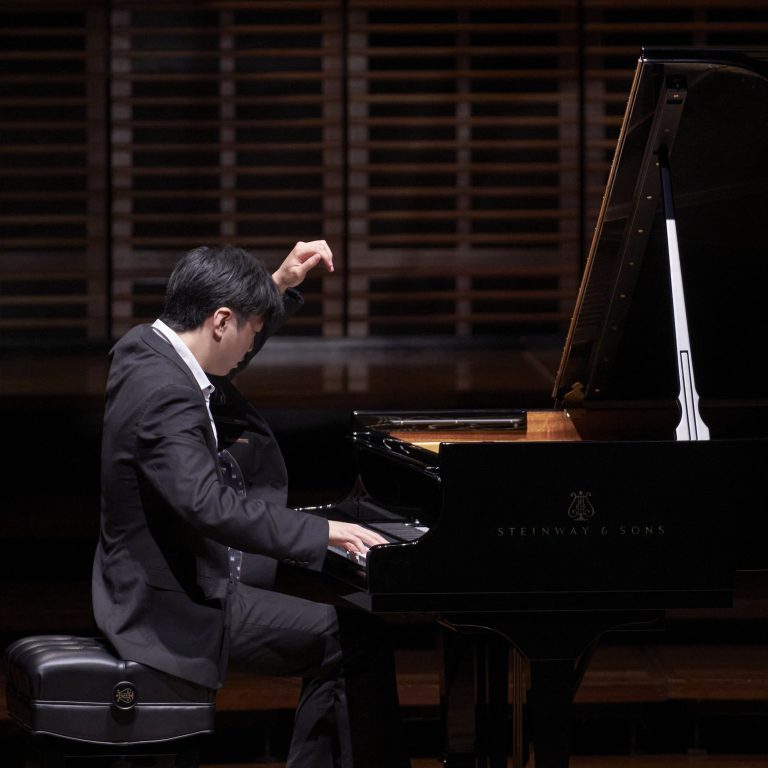Album Review: Philip Glass ˑ Piano Works / Vikingur Ólafsson

In April 2015, there was a landmark performance of Philip Glass’s Twenty Études for Piano at London’s Barbican Centre. The composer handpicked four pianists to perform with him, effectively anointing them as exponents of his art. One of these pianists was Vikingur Ólafsson, a brilliant young musician from Iceland. It is this repertoire that Ólafsson has chosen to include in his debut album with Deutsche Grammophon, Philip Glass ˑ Piano Works, released to coincide with Glass’s 80th birthday in January 2017.
On this recording, Ólafsson plays ten of the twenty Études, bookended by Opening from Glassworks, first in its original form and closing with a reworking by German producer and arranger Christian Badzura. Augmenting the ten Études, is reworking of the Étude No 2 also by Christian Badzura. Joining Ólafsson on these two Badzura arrangements are Ólafsson’s compatriots who form the Siggi String Quartet.
In the liner notes, Ólafsson talks of the privilege and dynamics of being able to work with a living composer. “Being able to meet and work with one of the art form’s pioneering forces is a rare and precious opportunity…..Playing Philip Glass’s music for and with the composer himself reminds me that music …is alive – never a dead monument but a living, ever-changing environment” he says.
It is the collaboration between the composer and the performer that makes this performance distinctive, allowing us to hear as closely as possible the composer’s intention. Since the emergence of the professional performer, composers no longer perform their own works. A direct line of communication between the composer and the performer is the next best thing.
Glass began to write the Twenty Études for Piano in the mid-90s. The final four were commissioned to celebrate Glass’s 75th birthday in 2012. Much like Chopin’s Études, Glass’s Études are diverse in tempo, mood and dynamic and are designed to challenge and hone technique. Glass himself is quoted as saying he composed the Études to explore a variety of “tempi, textures, and piano techniques”, but also to become “a better player” himself.
Glass’s writing epitomises the Minimalist style, which began in the 1960s and is characterised by the repetition of brief, melodic musical ideas with simple diatonic harmonies and steady, insistent rhythms pitted against cross rhythms. The minimum of material is repeated to maximum effect.
There are but a handful of pianists who are acknowledged as interpreters of Glass’s style. Ólafsson makes his mark, moulding tempi and subtlely shading repeated phrases, creating a striking impact with the slightest rubato or the most finely spun change in harmony. His rhythm is disciplined as in the patterns and cross patterns of Opening and the Études Nos 9 and 13; he treats rippling arpeggiated phrases with the utmost delicacy, as in the dreamy Étude No 2; yet, he is capable of building a rich, almost Romantic soundscape from the bustlingly percussive Étude No 6 rising to a crashing climax; in the Étude No 14, Ólafsson creates columns of distinctive chromatic chords rising from a bed of soft background harmonies. The finale to the selection of Études is the rhapsodic No 20 in which Ólafsson teases the rhythms, creating surprise at every turn.
Ólafsson’s playing is never automatic. His gift is to seek out the emotion in these intensely technical pieces,conveying Glass’s vision first-hand.
Shamistha de Soysa for SoundsLikeSydney©







